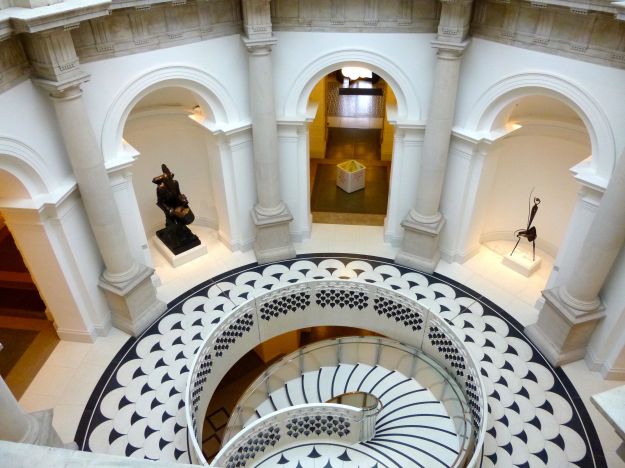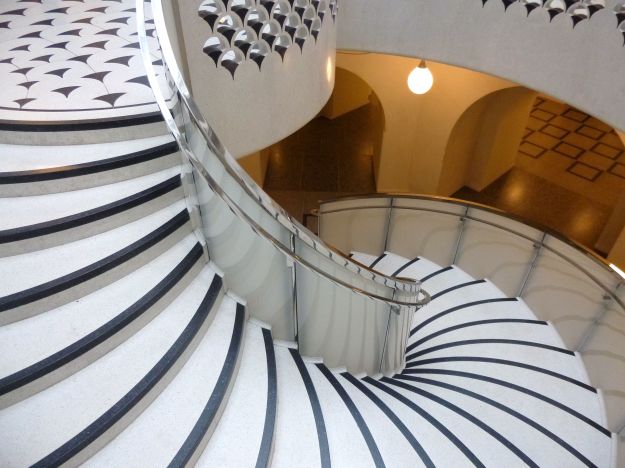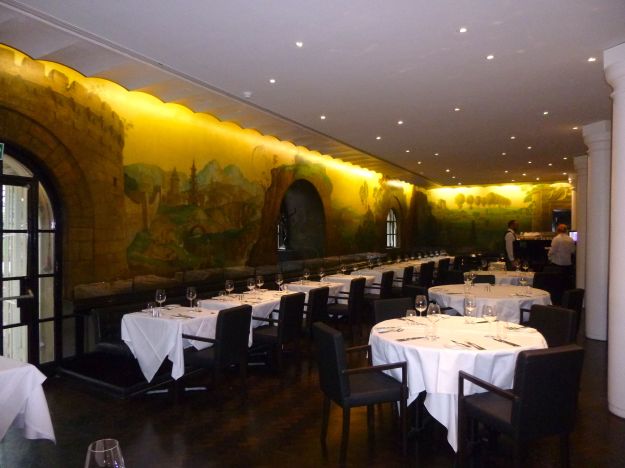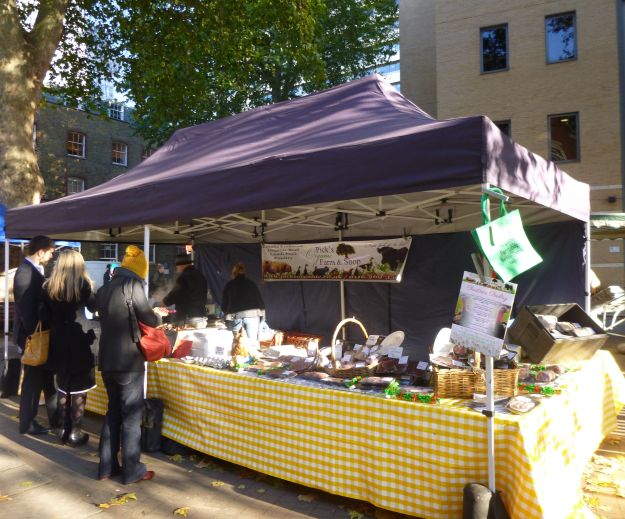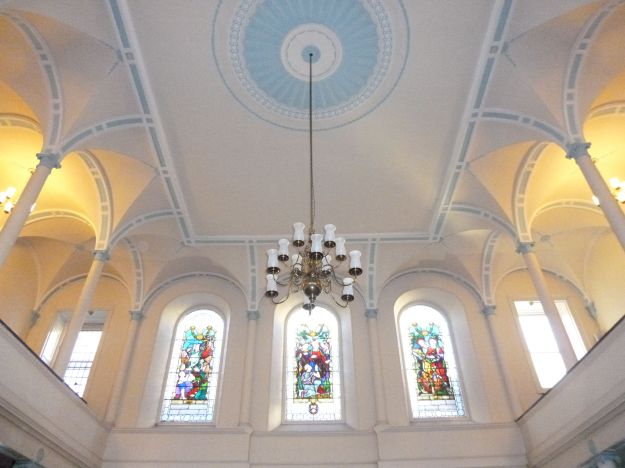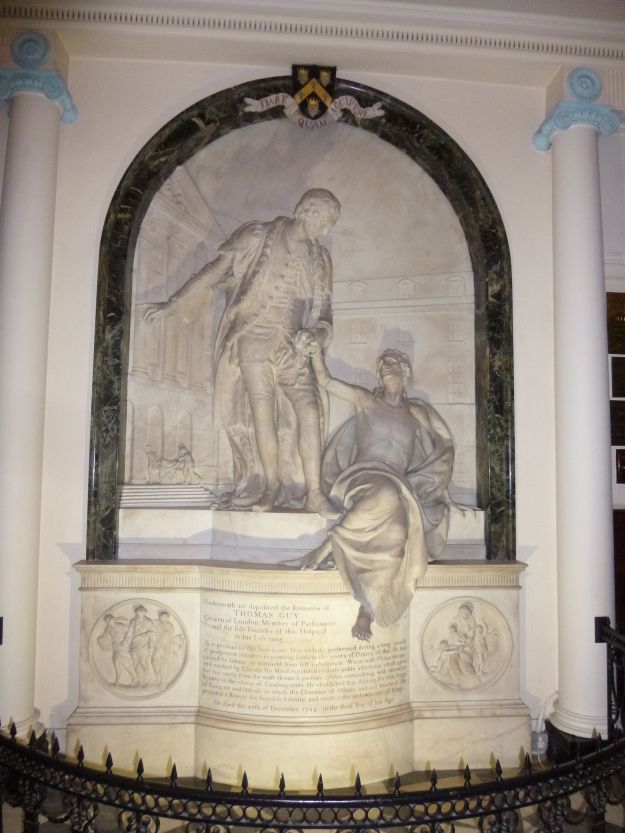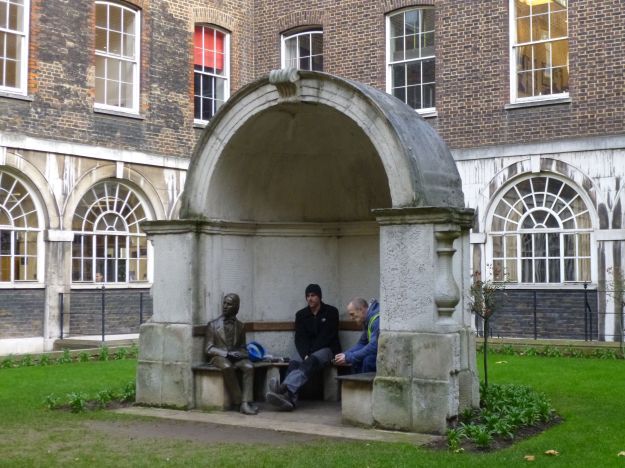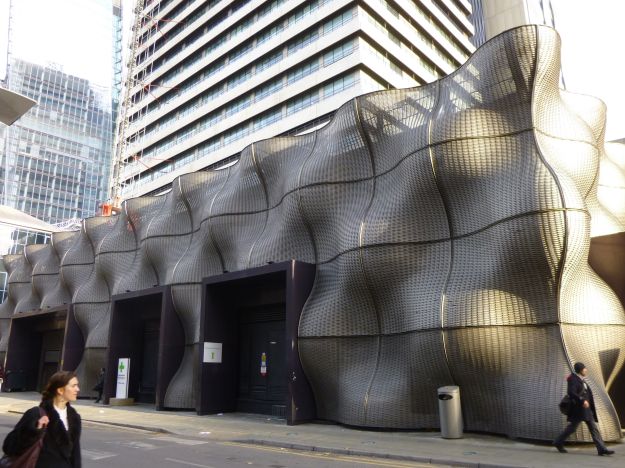Have you savoured our city’s culinary speciality—London Particular Soup? I confess that until recently I hadn’t, but that’s now been rectified thanks to an unlikely intermediary, the glamorous new staircase at Tate Britain.
Much has been written about this grand spiral of steps inserted at Tate Britain’s original entrance more than a century after the gallery opened. All agree it’s a sensation—daring, dazzling yet looking as though it’s been there forever.
But what’s its purpose? Such a flight of fancy is surely only there to lead into an equally impressive space. And so it was that I swept down the scalloped marble steps and into the newly refurbished Rex Whistler Restaurant.
Suddenly I was plunged into the rural idyll depicted on the mural by artist Rex Whistler that covers all the walls. Castles, caves and craggy mountains alternate with formal gardens and river valleys. As my eyes grew accustomed to the scene I noted the hunters that inspired its title: The Expedition in Pursuit of Rare Meats (or, as we might say now, out foraging for food). The gusto with which this royal party are tracking down their dinner helped inspire the description that greeted the restaurant’s opening in 1927 as “the most amusing room in Europe”.
Today, it’s not just the painting that’s packed with entertainment value: the London-inspired menu and English wine list are an adventure, too. Of course, we had to try the London Particular Soup, named after the pea souper fogs that were a regular feature of the city when Whistler took up his brush. But there was also an artichoke, walnut and caper salad. Who knew that Camberwell was once famous for its artichokes (just like Epping for its butter)?
But what to choose for the main course? Should it be traditional sirloin of Scottish beef or Dingley Dell pork? (The puffy, golden Yorkshire puds easily swung that one.) Or how about the tangy beetroot and pearl barley vegetarian option? This took some lengthy, but delicious chewing that left me with no room for Sussex Pond pudding—suet pastry with lemon sauce inside.
Well, perhaps I should admit that earlier on another staircase had led me astray. This more modest set of steps takes Tate members spiralling up into the heavenly heights of the rotunda. There, in front of a mirrored counter designed to evoke Manet’s A Bar at the Folies-Bergère, is an incredible display of pastries and cakes. I’m afraid I had already exhausted my day’s dessert quota in these ethereal surroundings, with great views down to the hall below.
So how does the new rehang of Tate Britain match up to its eateries? I’m happy to report that it more than rises to the occasion. Now that “themes” have been replaced by “chronology”, it is back to an exciting journey through the story of art in Britain, from Queen Elizabeth I in her finery to an empty room with Martin’s Creed’s Work No. 227—the lights going on and off.
The Rex Whistler Restaurant at Tate Britain. Lunch from £21 for two courses and £27 for three.
